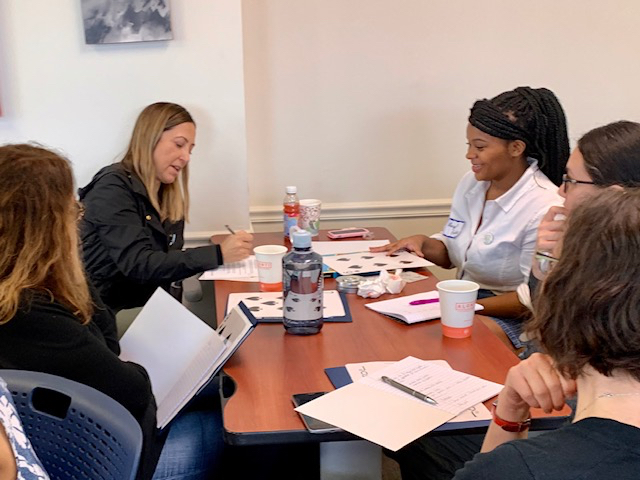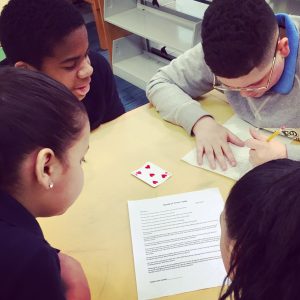Feb 25, 2020 The Most Versatile Activity in My Toolbox: Team Tally (In-Person or Online)
A Multipurpose Activity for Community Building, Reflection, Review, Data Gathering, Peer Teaching, and Formative Assessment
 In past posts, I’ve explored the idea of re-purposing icebreakers/rapport builders for exploring academic or training content, or as an active way to engage a group in reflection and dialogue. Team Tally continues to be on the top of my list for this kind of dialogue sparking activity with multiple purposes. It is my go-to community building, reflection, and review activity for groups of various ages, situations, and sizes. Over the years, I’ve shared versions of it in my books and here on the blog. Still, it is one of those techniques that continues to change and develop with use, and one that I continually hear from workshop participants that they’ve successfully used and tailored to their programs. During my online teaching and facilitation experiences over the past year, I used it successfully in breakout groups for rapport building, reflection and review of content.
In past posts, I’ve explored the idea of re-purposing icebreakers/rapport builders for exploring academic or training content, or as an active way to engage a group in reflection and dialogue. Team Tally continues to be on the top of my list for this kind of dialogue sparking activity with multiple purposes. It is my go-to community building, reflection, and review activity for groups of various ages, situations, and sizes. Over the years, I’ve shared versions of it in my books and here on the blog. Still, it is one of those techniques that continues to change and develop with use, and one that I continually hear from workshop participants that they’ve successfully used and tailored to their programs. During my online teaching and facilitation experiences over the past year, I used it successfully in breakout groups for rapport building, reflection and review of content.
Team Tally is so powerful because it blends the right amount of healthy competition to draw participants in, and if thoughtfully designed, carefully sequenced questions will keep them sharing in a non-threatening, collaborative atmosphere. A thoughtful educator or facilitator can create context, blend in targeted review, reflection, and data gathering questions around specific content, themes, or topics. Because it is participant-directed, it is ideal for transitional times, i.e., when returning from a break, mealtimes, or, when an unexpected change in a schedule occurs, and you need a self-directed activity to engage the group in while you adjust materials or set up. You can adapt the questions to fit the group and situation and always infuse opportunities for choice and ownership by weaving in flexibility as to how the questions are worded. Competition initially draws the group in, but it’s the choice-centered group sharing, collaboration and relationship building that keeps them engaged.
Materials:
Choose/create a Team Tally that fits your group. There are examples of rapport building and reflection versions in Tips & Tools for the Art of Experiential Group Facilitation, The Inspired Educator, Inspired Learner, and past editions of this blog. On my desktop, I have a team tally folder with close to a hundred variations adapted over the last 15 years for groups of all kinds (I am happy to share templates you can adapt – email me at jen@experientialtools.com).
Facilitation Suggestions:
- Divide participants into small teams of 4 to 6 participants (this is an effective large group activity that could be done at tables in even a large conference situation). For online learning I use choice-centered breakout rooms (using playing cards, sole-mates or other ways to group online – see previous posts). Jamboard can be useful place to post the Team Tally’s for group collaboration (email me at jen@experientialtools.com for specific examples of online facilitation of Team Tally).
- Ask teammates to talk through the get to know you or reflection questions on the list and come up with a cumulative score for each item
- This leads to engaging conversations, reflection, and connection as group members listen to and learn from each other.
- For the targeted information gathering, review and reflection, versions, give participants an extra sheet of paper for participants to write their answers down. This will give you data for formative assessment, or collective information to give back to the group as a peer teaching activity.
- After groups finish, gather everyone back for teams to share. I de-emphasize the score and emphasize the process by going around as groups finish and ask them to “not only tally their score but go back and choose two or three questions you found most interesting or generated the most discussion.” I find when I do this when groups report out, they not only share their score but some specific ideas and often inspiring highlights of their discussions.

Outcomes:
Time and time again, I’ve seen participants connect socially and build rapport and community over the discussion of shared experiences through this activity. I have used this Team Tally to focus on specific workshop, training or, academic outcomes and check for understanding or gather data on participant’s opinions about or knowledge around a topic. For example, during my time helping develop the Dylan’s Wings of Change “Wingman” peer leadership and social and emotional learning program, we used this with targeted questions around what youth felt were topics they think peers need to learn about and practice, and qualities of an effective facilitator. The answers to which we collected and then gave back to them later as they worked on designing and facilitating their programs.
 In my work with educators, I target questions around favorite engagement or reflection strategies and then share the notes taken by each team with the whole group as a workshop follow-up. I regularly hear from workshop participants who I’ve shared this with that they’ve adapted this successfully for a variety of purposes. If you are one of those facilitators, please reach out and share. If you would like a template or example in word to adapt to your groups, contact me at jen@experientialtools.com.
In my work with educators, I target questions around favorite engagement or reflection strategies and then share the notes taken by each team with the whole group as a workshop follow-up. I regularly hear from workshop participants who I’ve shared this with that they’ve adapted this successfully for a variety of purposes. If you are one of those facilitators, please reach out and share. If you would like a template or example in word to adapt to your groups, contact me at jen@experientialtools.com.
References: This activity was inspired by my colleague and friend Karl Rohnke who used a group tallying activity when we co-led professional development workshops that he called “Yeah Teachers” Funn N’ Games, 1996. I adapted it over the past 20 years to the reflective and review version that is still evolving today! Various versions are written up in my Inspired Educator, Inspired Learner (2014) book, and Tips & Tools for the Art of Experiential Group Facilitation 2nd Edition 2016.



No Comments